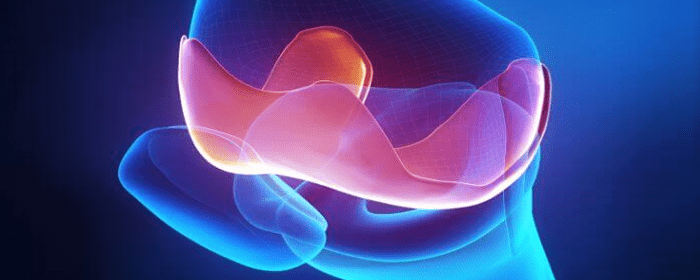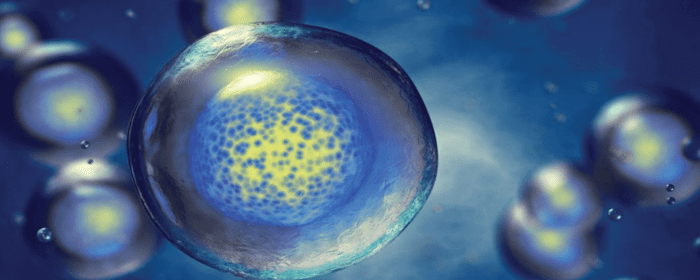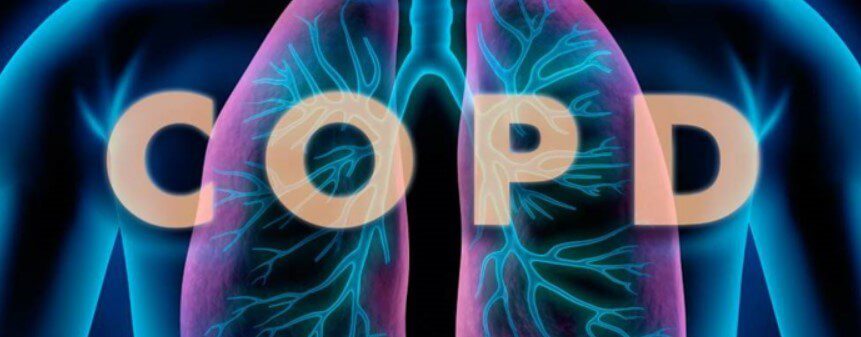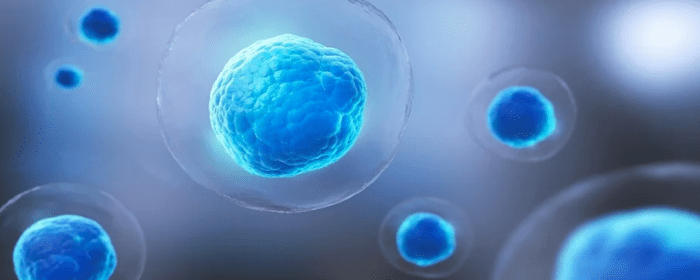
by admin | Nov 9, 2023 | Athletic Injury, Mesenchymal Stem Cells, Regenerative Medicine, Stem Cell Research, Stem Cell Therapy
Articular cartilage primarily consists of chondrocytes and extracellular matrix and has an essential role in the process of joint movement, including lubrication, shock absorption, and conduction. However, over time, damage to the articular cartilage caused by acute or repetitive trauma or disease of the joints – including osteoarthritis – often results in pain, lack of mobility, and reduced quality of life for an estimated 500 million people worldwide.
Current treatments to address articular cartilage defects include physiotherapy, medication, intra-articular injection, and intra-articular irrigation; none of these treatments are able to regenerate the new cartilage needed to correct the issue.
In recent years, mesenchymal stem cells (MSCs) have been found to be potential solutions for a number of diseases, including OA, specifically because of their ability to differentiate and produce a variety of cells. MSCs have also been found to be safe for use in humans and have demonstrated the ability to improve clinical symptoms such as pain, disability, and physical function.
Additionally, hyaluronic acid (HA) has demonstrated itself to be an important component of the synovial fluid by protecting joint cartilage by providing lubrication and acting as a shock absorber. However, in the presence of OA, HA concentration decreases and results in increased aggravation and joint damage to cartilage. Like MSCs, clinical studies have also demonstrated HA’s ability to relieve pain in patients with OA.
In this study, Li et al, investigate the therapeutic effects of bone marrow mesenchymal stem cells (BMSCs) combined with HA on articular cartilage repairs.
Specifically, 24 healthy canines were operated on to induce cartilage defect model before being randomly divided into 3 groups; each of these groups received a different treatment: bone marrow mesenchymal stem cells (MBSCs) plus HA, HA alone, or saline. After 28 weeks, Li et al. found that the canines treated with BMSCs plus HA (BMSC-HA) showed significant improvement in cartilage defects compared to those receiving just HA or just saline.
The authors also found that while BMSCs-HA demonstrated the most significant improvement in cartilage defect, treatment with HA alone also demonstrated improvements when compared to those receiving saline alone.
Li et al. also identified a number of important limitations of this study, including the limited level of cells and proteins; the repair of cartilage defects in this study was a dynamic process that limited the study to the terminal point of repair; and that this was a preliminary and non-blinded study, which could have affected the evaluation of ICRS macroscopic and histological score. Considering this, the authors call for further blinded and basic experiments as a way to further improve understanding.
As a result of this study, Li et al. concluded that both BMSCs-HA and HA alone could significantly promote new cartilage formation, with BMSCs-HA demonstrating a better way to repair cartilage defects in a canine model.
Source: “Mesenchymal Stem Cells in Combination with Hyaluronic Acid for ….” 2 Jul. 2018, https://www.ncbi.nlm.nih.gov/pmc/articles/PMC6028658/.

by admin | Nov 2, 2023 | Lupus, Mesenchymal Stem Cells, Regenerative Medicine, Stem Cell Research, Stem Cell Therapy
Systemic Lupus Erythematosus (SLE) is an autoimmune disease that causes inflammation to affect many different body systems including the joints, skin, kidneys, blood cells, brain, heart, and lungs.
Affecting over 5 million people worldwide, and associated with a wide range of symptoms, SLE is difficult to diagnose. Currently, there is no treatment to prevent or cure lupus and current therapeutic treatment options are only designed to treat and minimize the symptoms of the disease.
Considering their strong protective and immunomodulatory abilities, mesenchymal stem cells (MSCs) have been recognized as a potential treatment for various autoimmune diseases and inflammatory disorders, including SLE.
In this research article, Zhou et al. conducted a meta-analysis with the goal of assessing if MSCs are able to become a new treatment for SLE with good efficacy and safety.
Specifically, using predetermined criteria, the authors conducted a bibliographical search and statistical analysis to assess the efficacy and safety of MSCs for SLE. This search and analysis resulted in 10 studies comprising of 8 prospective or retrospective case series, including 231 SLE patients, and four randomized control trials (RCTs) with 47 patients with SLE in the case group and 37 patients with SLE in the control group, that fulfilled the inclusion criteria for this meta-analysis.
The authors found that all of the studies included as part of the meta-analysis of RCT and self-controlled studies with the exception of one indicated that MSC treatment of SLE can achieve better efficacy. Specific results of the RCT meta-analysis supporting this conclusion included lower proteinuria, increased serum albumin, and increased serum C3 at 3 months, lower SLEDAI values at 3 months and 6 months, and a lower rate of adverse events in the MSC group when compared to the control group.
Similar results were observed and reported from the meta-analysis of self-controlled studies. These results included MSC treatment significantly reducing proteinuria and the value of SLEDAI at 1 month, 2 months, 3 months, 4 months, 6 months, and 12 months. Further supporting evidence reported included improved values of SCR, BUN, C3, and C4.
While the results of this meta-analysis were overwhelmingly supportive of MSCs as a potential treatment option for SLE, the authors also noticed several limitations associated with their findings. These limitations included the small sample sizes of the included studies and the inconsistency of the severity of the patient’s disease.
Although more studies with larger sample sizes should be conducted to confirm these findings, Zhou et at. concluded that MSCs might be a good treatment agent for SLE in the clinic.
Source: “Immunomodulatory Effect of MSCs and MSCs-Derived Extracellular ….” 16 Sep. 2021, https://www.ncbi.nlm.nih.gov/pmc/articles/PMC8481702/.

by Stemedix | Oct 30, 2023 | COPD, Regenerative Medicine, Stem Cell Research, Stem Cell Therapy
Chronic obstructive pulmonary disease (COPD) is a condition that affects about 12.5 million people in the United States. COPD can become progressively worse over time and affect your breathing.
Although lifestyle changes, oxygen therapy, and medications have traditionally served as the standard treatment choices, there is now another promising option for treating COPD, regenerative medicine, also known as stem cell therapy.
Understanding COPD: Symptoms and Causes
COPD is the umbrella term for several conditions that cause airflow blockages and other breathing-related issues. Chronic bronchitis and emphysema can both lead to COPD. Chronic bronchitis is the inflammation of your bronchial tubes’ lining, while emphysema destroys the air sacs at the ends of the smallest air passages.
Key Symptoms of COPD
Common symptoms of COPD are:
- Chest tightness
- Wheezing
- Fatigue
- Unintended weight loss
- Shortness of breath
- Chronic cough that produces clear, white, yellow, or green mucus
- Swelling in feet and ankles
It’s common to experience exacerbations, which is when symptoms get significantly worse for days at a time. Many factors cause exacerbations, including exposure to air pollution, respiratory infections, and anything else that triggers inflammation.
Causes and Risk Factors
Those most likely to develop COPD are women and people who:
- Are over 65.
- Have experienced air pollution.
- Had many respiratory infections during childhood.
One of the most prevalent causes of COPD is smoking. Smoking irritates your airways, triggering inflammation that narrows those airways. Because smoke also damages the cilia, they’re not able to effectively get rid of mucus or particles from the airways.
Another cause of COPD is alpha-1 antitrypsin (AAT) deficiency. This is an uncommon disorder that can cause emphysema. When you have AAT deficiency, you don’t have an enzyme that protects your lungs from inflammation. The deficiency makes it easier for your lungs to experience damage from irritating substances like dust and smoke.
The Current Treatments and Their Limitations
Current COPD treatments include the use of bronchodilators and steroids — as well as oxygen therapy — to minimize the symptoms of the condition.
Bronchodilators are medications that relax the muscles around the airways, helping you get better airflow. Some bronchodilators offer quick relief for acute episodes, while others are more appropriate for maintenance.
Steroids work together with bronchodilators to reduce airway inflammation. The problem with steroids is that they have significant side effects when used as a long-term treatment. Some of these side effects include weight gain, an increased risk of developing infections, and even bone loss.
Oxygen therapy is appropriate for people who have severe hypoxemia because it helps improve oxygen levels and relieve symptoms. Pulmonary rehabilitation programs are other options that combine exercise training with education to help patients understand the condition better.
Surgery is the last recourse for people with severe COPD who don’t find any relief from medications or other options. For some people, a lung transplant is a viable choice. For others, the removal of damaged lung tissue can offer some relief from symptoms.
Limitations of Traditional Treatments
Although doctors have been providing these options for a long time, they have limitations. For instance, they may offer relief from symptoms, but they typically don’t address the underlying cause of the problem. Even after treatment, the damage to your airway passages and lungs remains.
The side effects of long-term use of these treatments can also be serious. Corticosteroids put a strain on your heart, cause muscle weakness, and can even impact wound healing, which can make them a challenging choice for long-term management of COPD.
More invasive procedures, like surgery, have significant risks. Additionally, there are limits to who can receive surgery for COPD because of the use of anesthesia.
Recent Advances in the Treatment of COPD
To help improve the quality of life of a patient with COPD, new treatment options are available. By working closely with your doctor, you can find the right choice for your unique needs.
Drug Therapy Innovations
The latest medications for those with COPD are new bronchodilators and anti-inflammatory medications that don’t cause the same side effects that may make you hesitate to try long-term drug treatments. The goal of these new medications is to offer longer-lasting support and reduce the flares you experience with COPD.
Inhaler Technologies
Your inhaler is an important part of a COPD treatment program, and the latest technologies allow for better drug delivery while also ensuring that the inhaling techniques are correct. All of this makes it easier to stick to using your inhaler regularly.
Stem Cell Therapy for COPD
A new potential treatment option for COPD is regenerative medicine, also known as stem cell therapy. This type of regenerative medicine uses stem cells to help your body heal itself so that it can regenerate damaged tissue for better lung function.
Mesenchymal stem cells (MSCs) can be isolated from various sources, such as bone marrow, adipose tissue, or umbilical cord blood. These cells have the ability to differentiate into different cell types and possess immunomodulatory and regenerative properties.
MSCs have shown promise as a potential therapeutic approach for chronic obstructive pulmonary disease (COPD). While there is currently no cure for COPD, MSC-based therapies have the potential to modulate the immune response, reduce inflammation, and promote tissue repair in the lungs.
When administered into the lungs, MSCs can release anti-inflammatory molecules, promote tissue regeneration, and interact with the immune system to suppress excessive inflammation.
Getting Treatment for COPD
If you have COPD, ensuring that you have the right treatment plan on your side is vital for your long-term recovery. If you have COPD and it is progressively worsening, and there are limited treatment options available, you may want to explore stem cell therapy as a potential avenue for slowing disease progression or improving lung function.
Regenerative medicine aims to enhance what your body already does naturally, helping it heal so that you improve your quality of life. Speak to a regenerative specialist on the options you may have with this new alternative therapy option.

by admin | Oct 25, 2023 | Mesenchymal Stem Cells, Regenerative Medicine, Stem Cell Research, Stem Cell Therapy
Biomedical applications of mesenchymal stem cells (MSCs) in the field of regenerative medicine continue to evolve. Coupled with the rapid development of molecular biology and transplantation techniques, MSC applications have become a central focus of research surrounding regenerative medicine.
Since being discovered nearly 50 years ago, the understanding of various techniques for MSC extractions and the subsequent potential for differentiation has continued to advance.
This review, presented by Han et al., provides a brief overview of MSC extraction methods and their subsequent potential for differentiation and summarizes the future applications and challenges of various MSCs in the field of regenerative medicine.
It has now been well established that MSCs can be isolated from various tissues, including bone marrow, adipose, synovium, and human umbilical cord blood. The general process for MSC extraction involves the isolation of various tissues, digestion to obtain cells, culturing for three to five days, and continuous culturing of adherent cells to the desired passage.
Interestingly, the authors point out that rabbits are the most frequently used animal models for experiments involving cartilage or bone tissue regeneration. Considering this, the authors call for the surface markers of rabbit tissue-derived MSC to receive increased focus and further verification.
Han et al. also discuss the differentiation potentials of MSC types, highlighting that bone marrow-derived MSCs display superior capabilities for differentiation into osteogenesis and chondrogenesis under standard differentiation protocols. They also point out that umbilical cord blood-derived MSCs (UCB-MSCs) demonstrate biological advantages relative to other adult sources, including their capability for longer culture times, larger-scale expansion, and higher anti-inflammatory effects. Considering that differentiation conditions vary based on the type of MSC, the authors highlight that it is becoming increasingly necessary to choose the desired MSC type according to the specific purpose being sought.
MSC-based regenerative medicine has been widely studied and applied to many aspects of the field. This review summarizes several reports concerning the latest preclinical and clinical trials of various MSC types for tissue engineering, most notably the reconstruction of fragile tissue associated with the musculoskeletal system, nervous system, myocardium, liver, cornea, trachea, and skin.
In order to improve the therapeutic effectiveness of MSCs, while also reducing the potential identified risks, the authors suggest reducing excessive cytokines, further exploring the immunomodulatory effects of MSCs, and establishing strict preclinical biosafety testing rules. Additionally, longer and larger controlled clinical trials are required to further determine the safety of MSCs.
While there have been tremendous advances in the field of regenerative medicine, especially as they relate to MSCs, Han et al. share a number of challenges that have to be overcome before the clinical application of MSC therapy, with the primary challenge being the implementation of a standardized method of isolation and culturing for MSCs.
The authors conclude this review by summarizing three distinct properties of MSCs that make them an optimal source of tissue regeneration: their immunoregulatory capacity, paracrine or autocrine functions that generate growth factors, and their ability to differentiate into target cells.
Source: “Mesenchymal Stem Cells for Regenerative Medicine – PMC – NCBI.” 13 Aug. 2019, https://www.ncbi.nlm.nih.gov/pmc/articles/PMC6721852/.

by Stemedix | Oct 16, 2023 | Parkinson's Disease
Parkinson’s disease is a complex neurological disorder. It can affect many aspects of your life and wear down your mental health. Fortunately, there are now modern treatment options that help you manage your Parkinson’s symptoms.
If you’ve just received a Parkinson’s diagnosis, don’t give up hope. Learn more about your treatment options so you can live your life to the fullest, regardless of your diagnosis.
How Parkinson’s Symptoms Affect Daily Living
You’ve probably heard of the most common symptoms of Parkinson’s. They can make daily tasks feel more challenging and inaccessible. As Parkinson’s disease progresses, if there is no medical intervention, symptoms tend to worsen.
Motor Symptoms: Trouble with Normal Movements
Parkinson’s disease is related to the amount of dopamine in your brain. When your brain cells stop producing the correct amount of dopamine, your movements change. You no longer have smooth, controlled movements. You may experience shaking, tremors, and slowed motor skills.
Someone with Parkinson’s may have trouble lifting, bending, twisting, or even walking. In the later stages of this disease, Parkinson’s can cause complete immobility, necessitating wheelchair assistance.
If you can’t move around properly, you can’t carry out many normal daily tasks. Cooking, cleaning, and self-care have become nearly impossible.
Digestive Health and Gastrointestinal Problems
Changes in your brain from Parkinson’s disease can lead to problems with digestion. You may experience constipation, bloating and indigestion, and urinary incontinence. Gastrointestinal changes can make eating a less positive experience for Parkinson’s patients.
Mood and Personality Changes
As with any neurodegenerative disorder, Parkinson’s disease can cause mood changes. You may not recognize what’s happening to your mental state. Unfortunately, this is an expected symptom of this neurodegenerative disease.
Parkinson’s patients may experience increased irritability, suspicion, confusion, and depression. These mood changes make it harder to get along with other people. You may start to feel like a different person altogether.
Personality changes can impact your social relationships, which are essential for human health and connection. With the rise in stem cell therapy treatments for Parkinson’s, however, there is hope for getting back to your former self.
Why Early Treatment Is So Important
Getting Parkinson’s disease treated early is essential to slowing the progression of this disorder. The earlier you catch Parkinson’s, the better your outcome will be. Since this is a neurodegenerative disorder, time spent untreated can worsen your symptoms.
If you have just received a diagnosis, now is the time to start looking into your treatment options. What’s out there for you? Is there hope? The answer is yes.
What Are Your Treatment Options?
Modern science and research have allowed medical providers to help slow the progression of Parkinson’s disease. Treatment options include various therapies to help you regain your speech and motor skills. Other innovative treatments, like regenerative medicine, help manage the condition by repairing tissues to improve your health.
Changing Your Lifestyle
Lifestyle changes can have surprising effects on your overall health. Certain parts of your lifestyle may be contributing to worsening health. These can include smoking, under exercising, and overeating.
When you receive a Parkinson’s diagnosis, it’s important to take your health seriously. Getting plenty of sleep and nutrition will help you feel your best each day. You should also quit smoking and give up other harmful habits, like excessive snacking on junk food.
You can protect your health by including healthier habits in your daily routine. Lifestyle changes alone may not cure Parkinson’s, but they can improve your quality of life.
Occupational, Speech, and Motor Therapy
You can opt for speech, motor, or occupational therapy to improve your skills in daily life. These therapies are designed to restore daily functioning in ways that promote independence. If you struggle with your current tasks, this may be a good option for you.
Certified therapists will help you gain new skills that assist with movement, speech, and performing tasks. A Parkinson’s diagnosis doesn’t mean you’re doomed. With the right types of therapy in your life, you can achieve a higher level of function.
Regenerative Medicine with Regenerative Properties
Regenerative medicine, also known as stem cell therapy, utilizes mesenchymal stem cells (MSCs). MSCs are multipotent stem cells that can be isolated from various tissues, such as bone marrow, adipose tissue, and umbilical cord, and they possess several beneficial properties.
MSCs hold promise as a potential therapeutic approach for Parkinson’s disease. This condition is characterized by the loss of dopaminergic neurons in the brain. MSCs have been studied for their ability to modulate inflammation, promote neuroprotection, and stimulate endogenous repair mechanisms in the brain.
MSCs have shown the potential to improve motor function, reduce neuroinflammation, and promote the survival and differentiation of existing neurons. Additionally, MSCs can secrete neurotrophic factors and anti-inflammatory molecules, which may contribute to their therapeutic effects.
When it comes to Parkinson’s disease treatment options, stem cell therapy may be one to explore as a potential therapy in conjunction to others. Some patients experience improvements in their speech, cognition, and motor skills after stem cell treatments.
What to Expect from Stem Cell Therapy for Parkinson’s
Scientists have not yet found a cure for Parkinson’s disease. However, with appropriate stem cell therapy, we may be able to slow the progression of this disorder. Here are some results you can expect from consistent stem cell treatments for Parkinson’s.
More Energy
Stem cell treatments have given our patients more energy and less fatigue. You want to enjoy your life to the fullest. Why not enjoy an extra energy boost from the regenerative powers of stem cell therapy?
Reduced Tremors and Shaking
Tremors are an inconvenient symptom of Parkinson’s disease. Certain stem cell treatments may reduce the frequency of your tremors and shaking. Arm and leg movements would then be easier and less stressful. You may find that your coordination also improves.
Better Cognition and Memory
Parkinson’s unfortunately affects the way you think and how much you can remember. Some patients have seen marked cognitive improvement after stem cell treatments. This is likely because stem cells have the power to regenerate damaged brain cells and improve overall mental functioning.
More Fluid Movements
Stiffness and inflexibility come with Parkinson’s disease. Through stem cell therapy, you may be able to achieve more fluid movements.
Managing Your Parkinson’s Diagnosis with Hope
With a Parkinson’s diagnosis, you do have options to explore. Through traditional and innovative treatments like stem cell therapy, science may be able to help you reverse or slow the progression of this disease. Patients can have the potential to manage their condition and possibly help improve their daily life and activities.






 St. Petersburg, Florida
St. Petersburg, Florida
